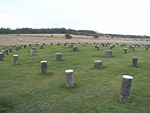The Stonehenge School
1958 establishments in EnglandAmesburyCommunity schools in WiltshireEducational institutions established in 1958Secondary schools in Wiltshire ... and 1 more
Use British English from February 2023
The Stonehenge School is a mixed comprehensive school in Amesbury, Wiltshire, England for children aged 11 to 16. As of December 2022, the school had 940 places and 969 students were enrolled.The school's logo is an image of Stonehenge. It is divided into a Lower school, Middle school and Upper school.
Excerpt from the Wikipedia article The Stonehenge School (License: CC BY-SA 3.0, Authors).The Stonehenge School
Holders Road,
Geographical coordinates (GPS) Address Nearby Places Show on map
Geographical coordinates (GPS)
| Latitude | Longitude |
|---|---|
| N 51.1746 ° | E -1.7707 ° |
Address
Holders Road
Holders Road
SP4 7PP , Amesbury
England, United Kingdom
Open on Google Maps








